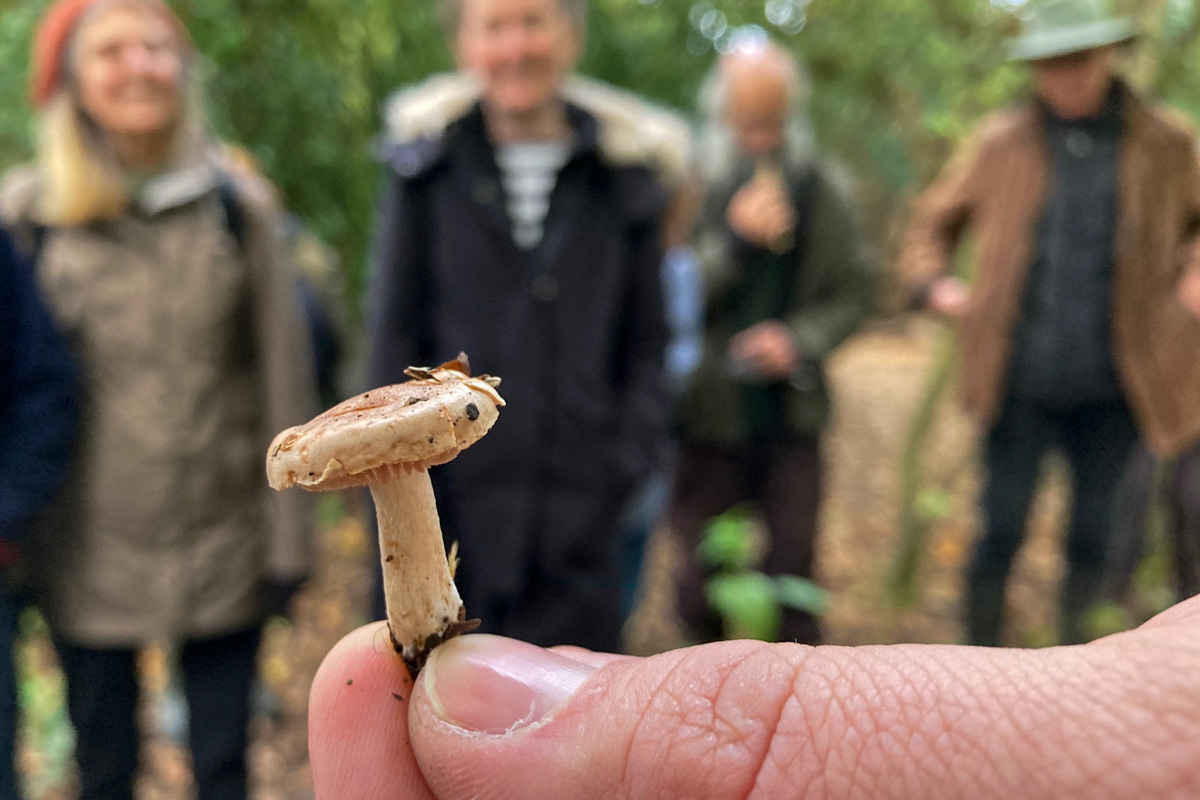To be fair, I could have picked any of the names to headline today's two-hour, 'sold out' Lukas Large fungi walk around Moseley Bog. But Dead Man's Fingers were one of my favourite's with their pointy black protuberances that look nothing like what anyone would imagine a mushroom to be.
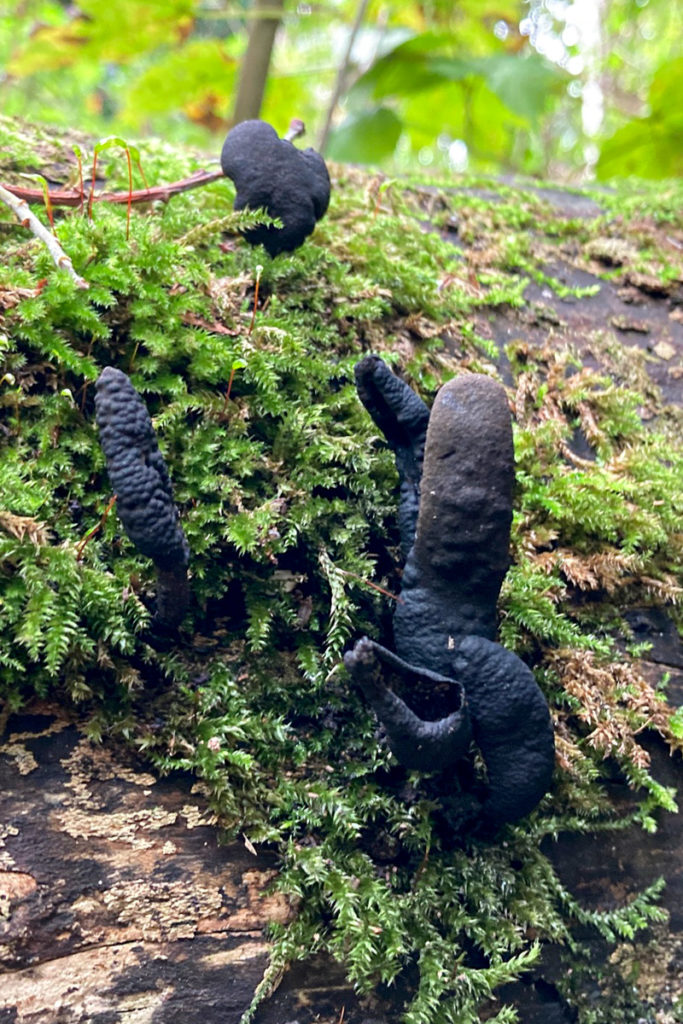
There was also:
The amethyst deceiver, which changes colour, almost like camouflage.
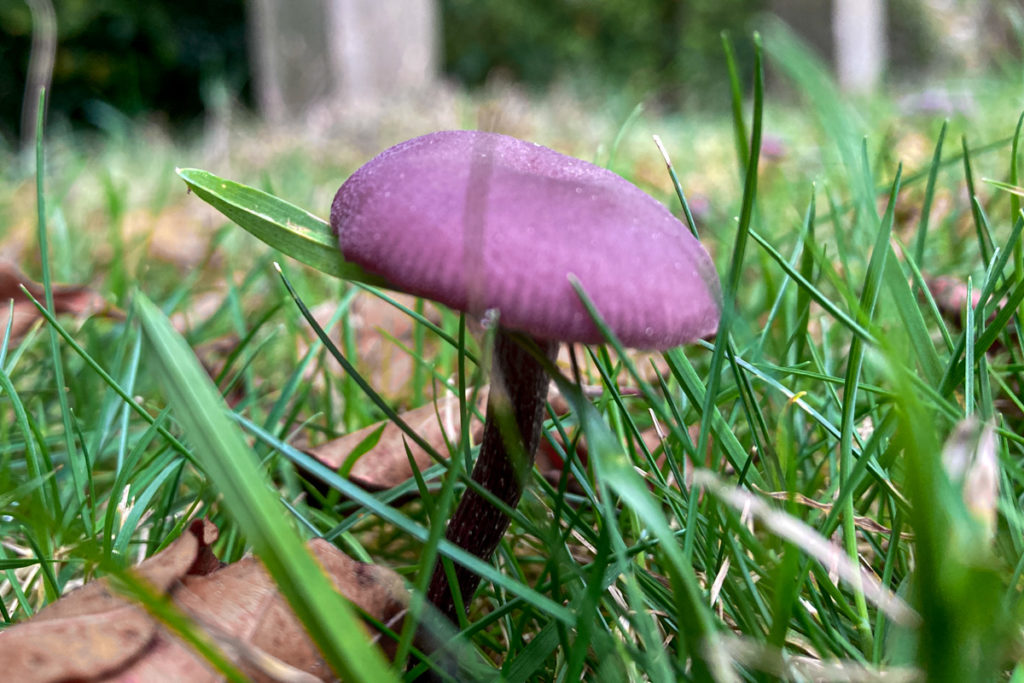
The white saddle or elfin saddle, a convoluted spore shooter that looks a bit like a biology book diagram.
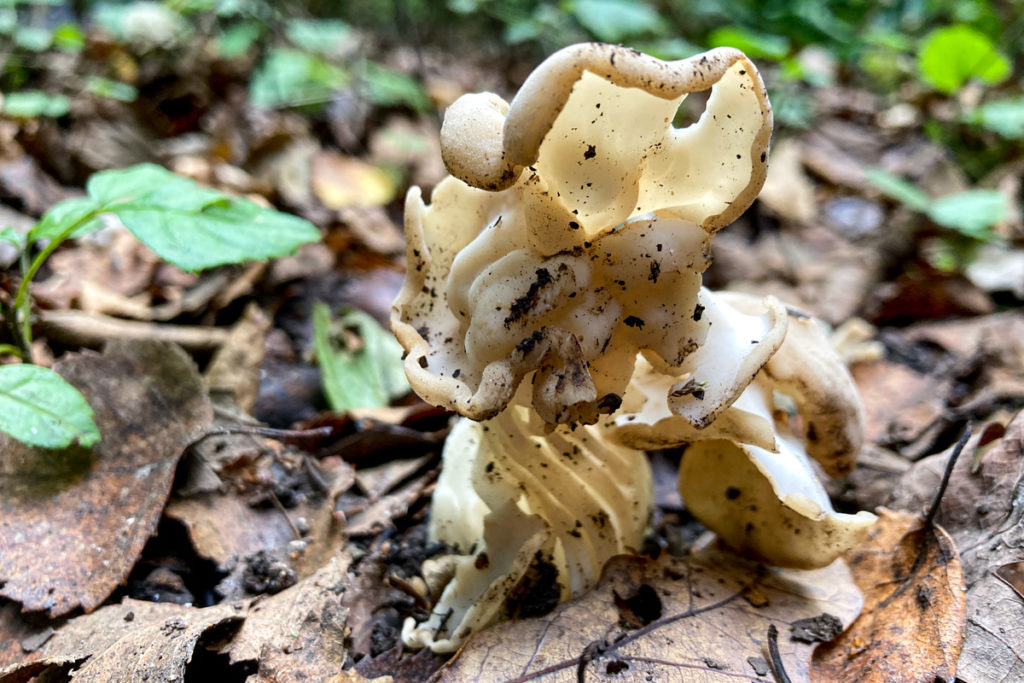
Clustered brittlestem – which grows in clusters with er brittle stems.
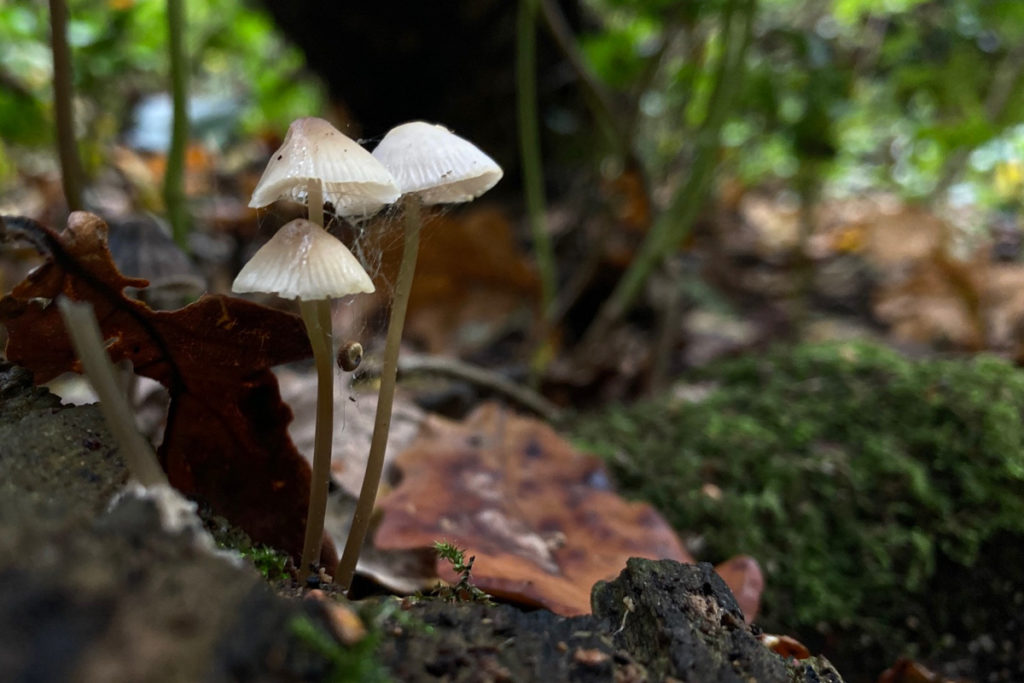
Brown roll-rim – the only fungus known to have killed a mycologist (someone who studies fungi). Julius Schaeffer died after eating it. Apparently it can cause an allergic reaction which leads the body to kill own blood cells. "Eating one is a bit like Russian roulette," says Lukas.
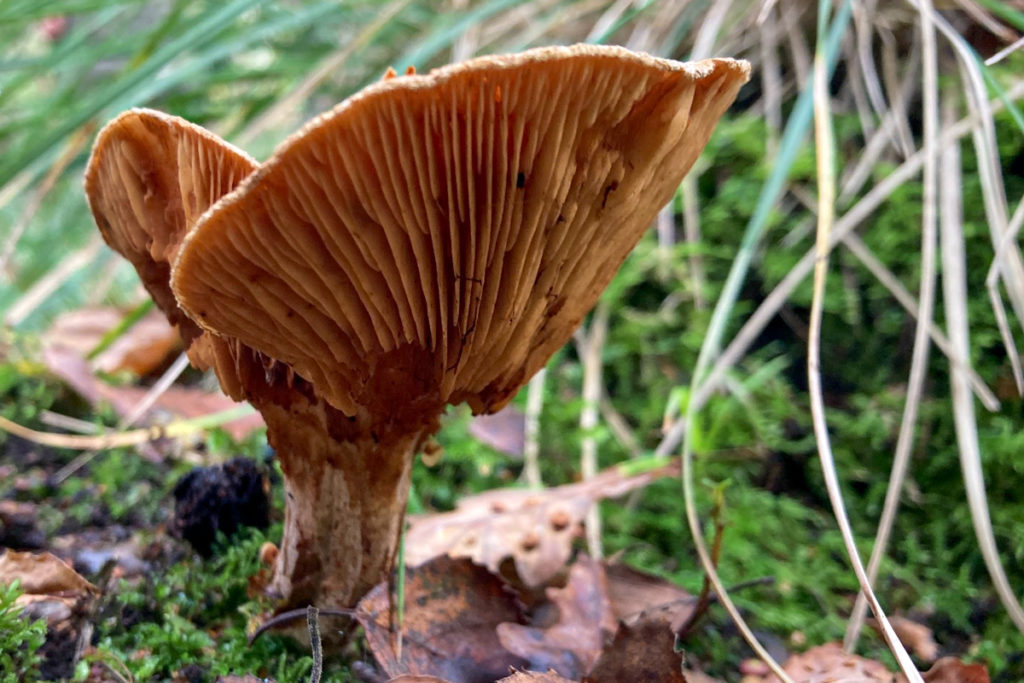
Trooping funnel – which grows in troop lines or rings.
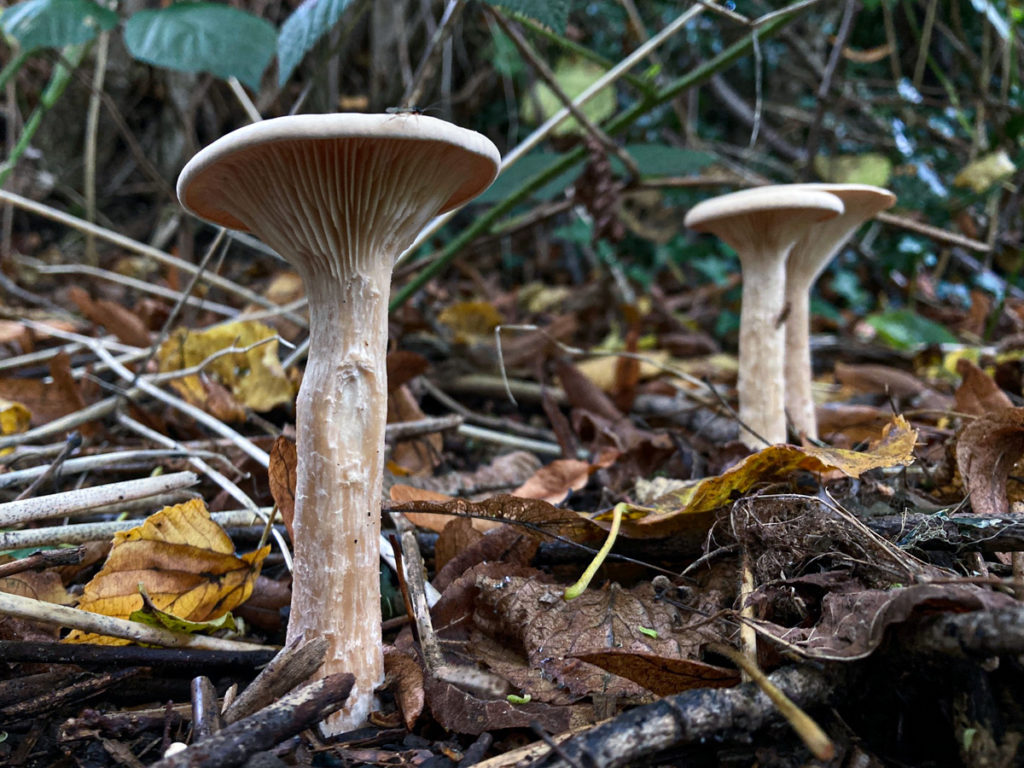
Birch brackets – which grow on birches and have lots of medicinal properties.
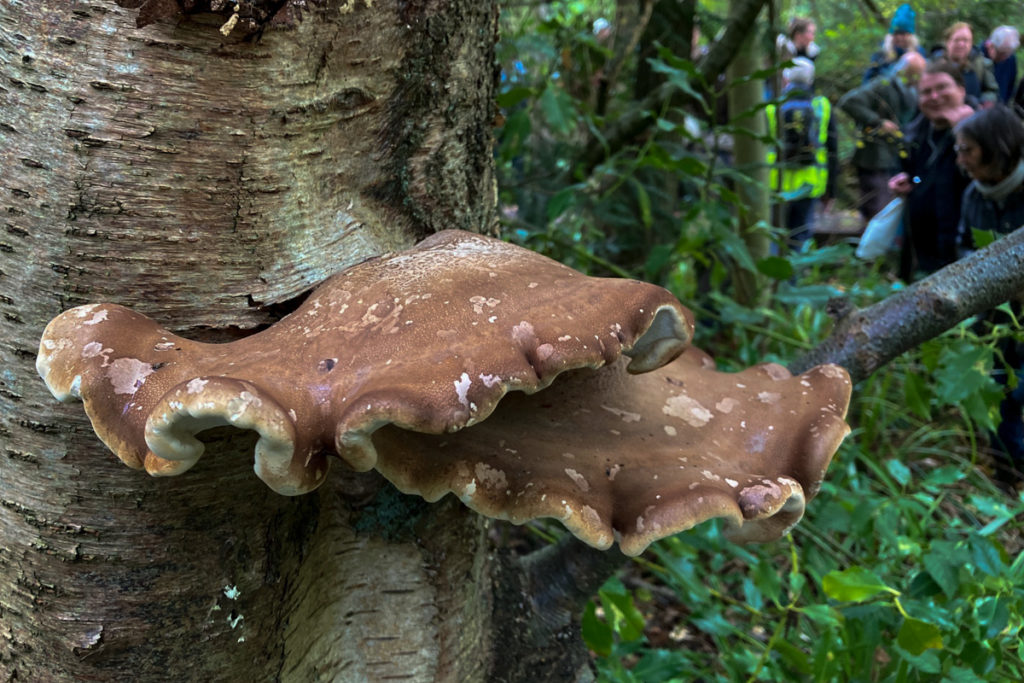
Apricot clubs – a lovely yellow coral fungus.
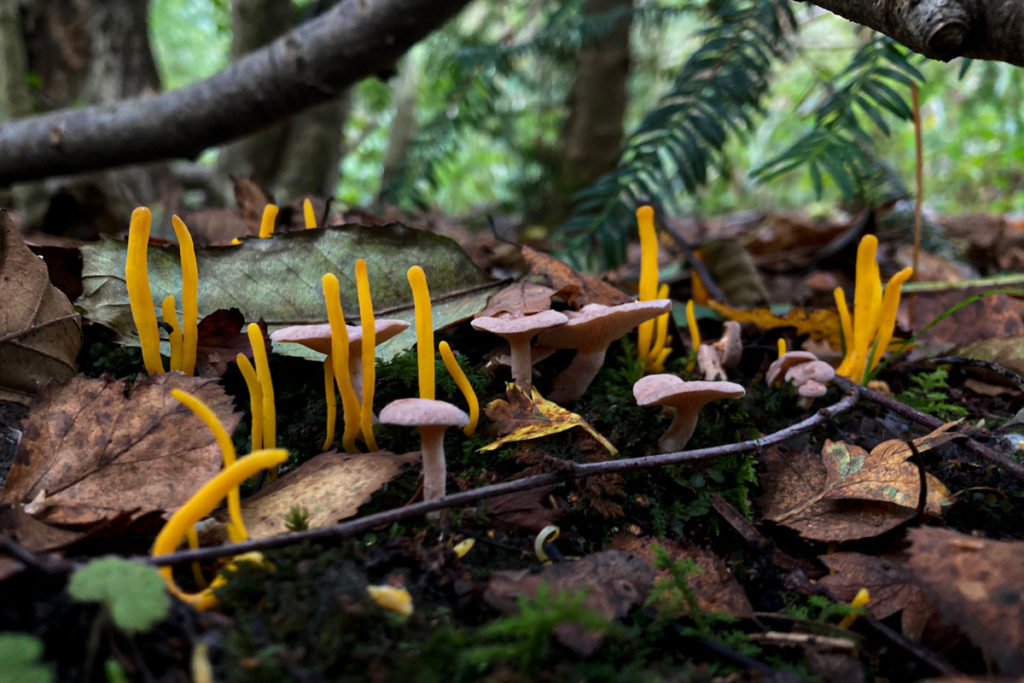
Sheathed woodtufts – shiny!
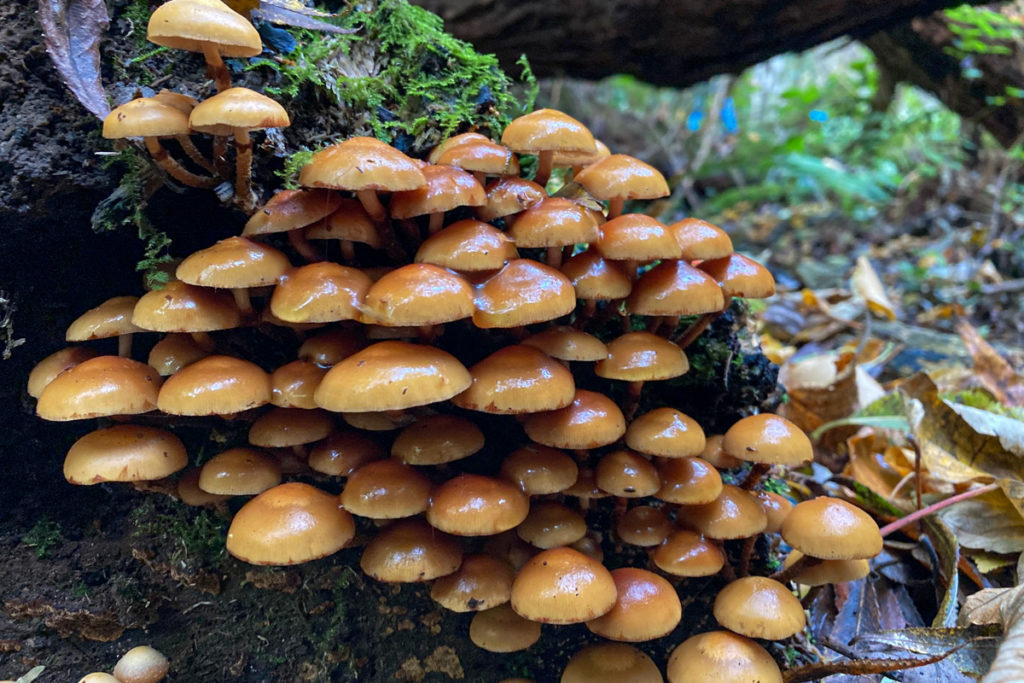
Inkcaps – I think these were the ones that were highly poisonous if alcohol is consumed a few days before or after.
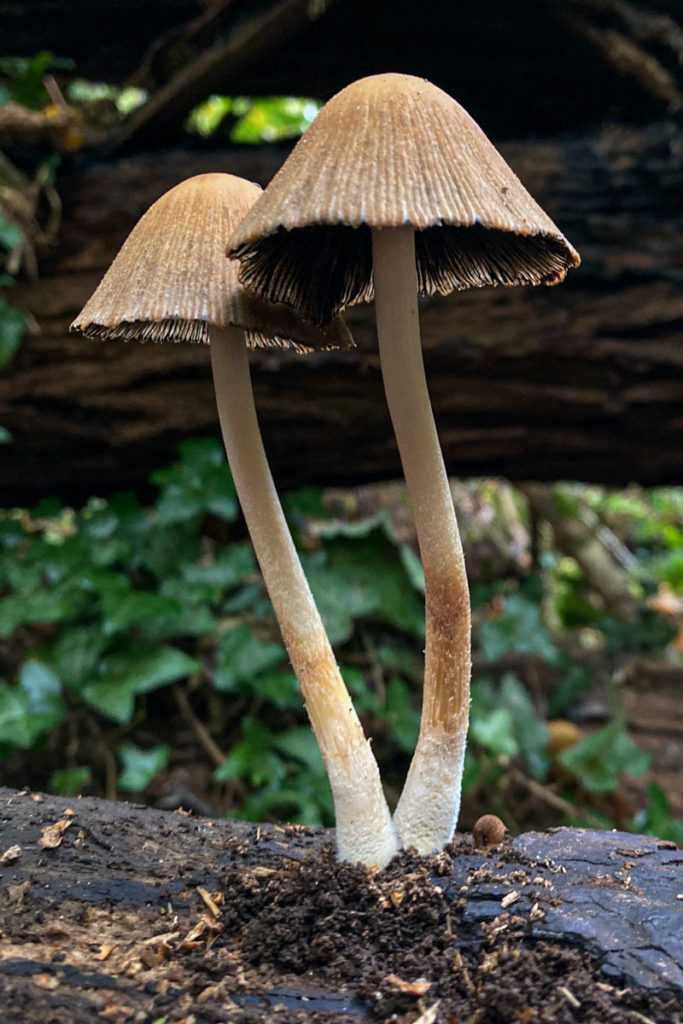
I think the photo below is of the red cracked bolete – which drops spores out of pores instead of gills on the underside…
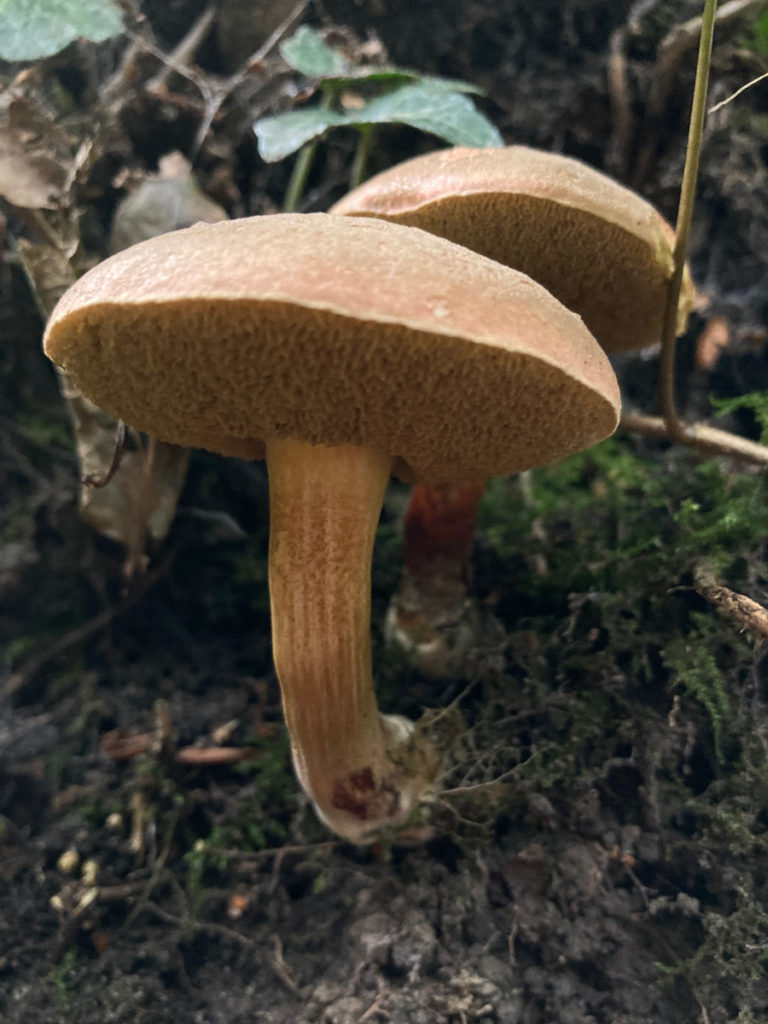
Candlesnuff – because that's what it looks like.
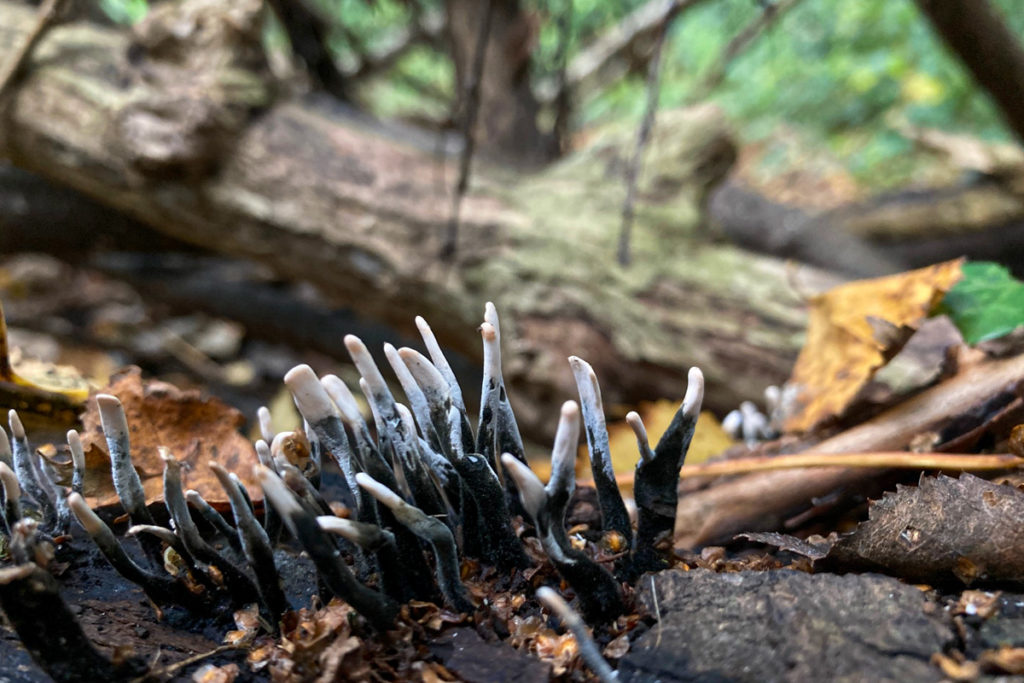
Hairy curtain crust which commonly grows on oaks.
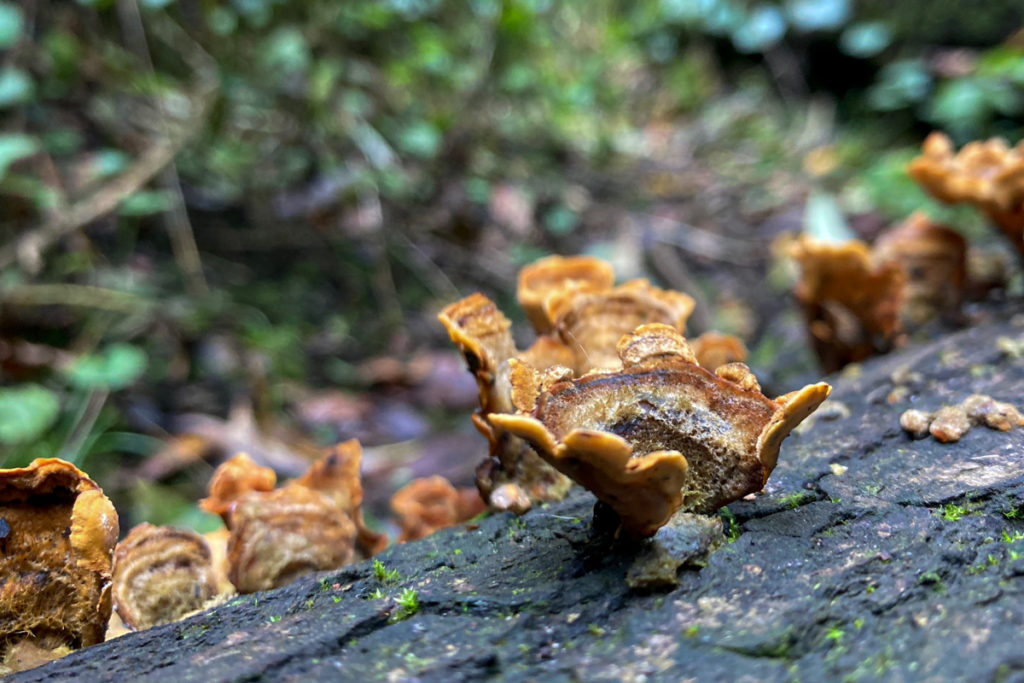
Shaggy inkcap aka lawyer's or judge's wig.
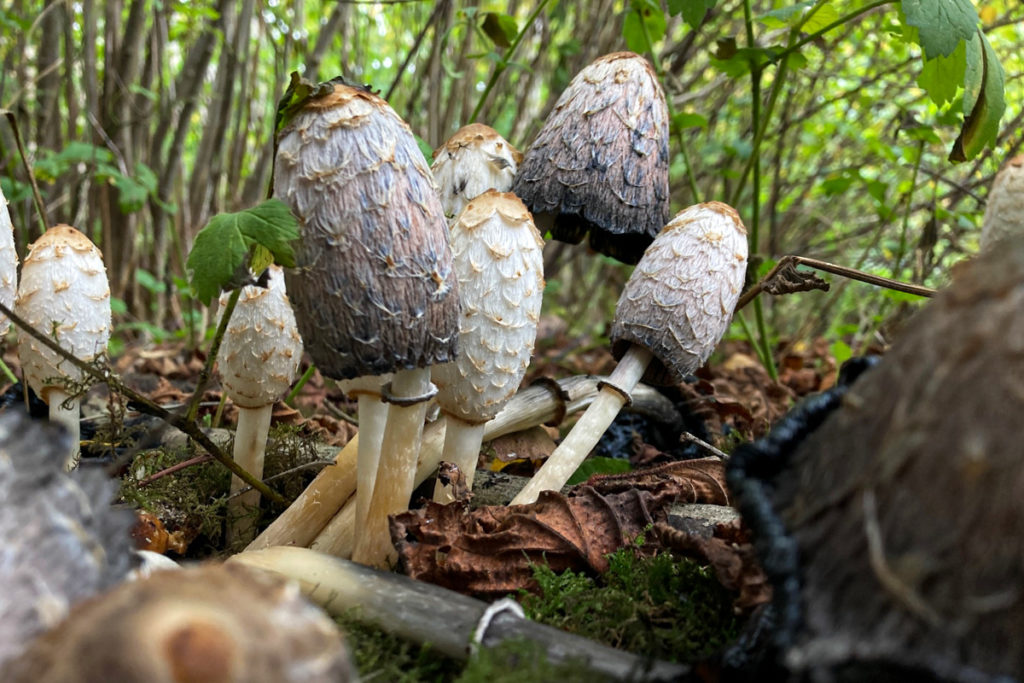
Green elf cups – although some walkers thought it was blue. Maybe teal? Anyway, this vivid coloured small mushroom also discolours the decomposing wood it grows on.
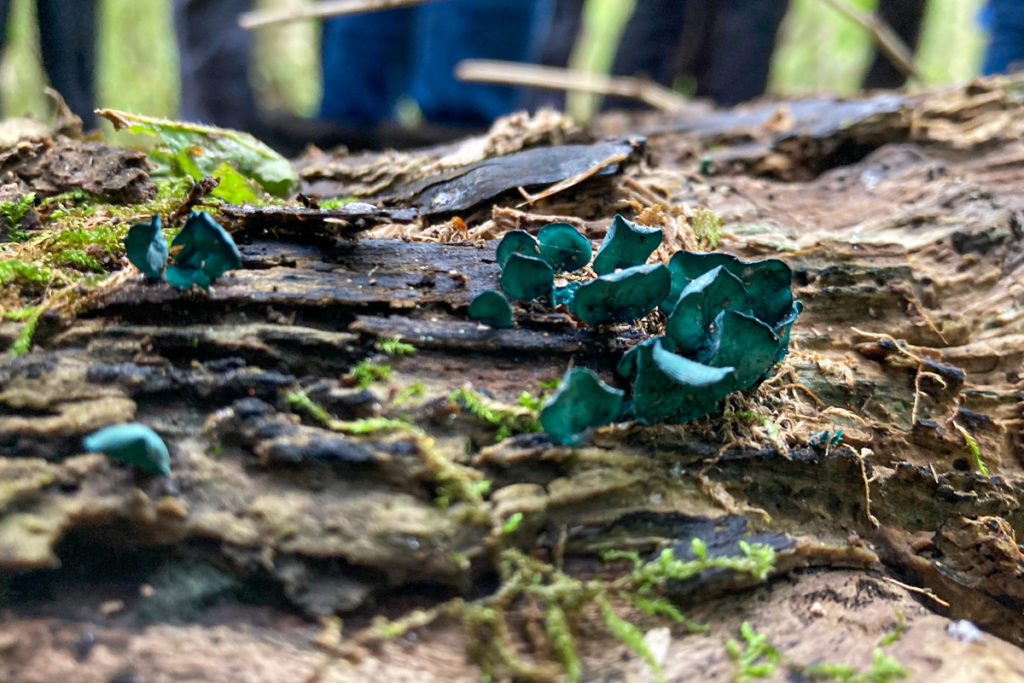
From what I can gather, the 2021 'mushroom season' (Sept-Nov or until the first severe frost) is a good one. Certainly once we started looking in the Moseley Bog nature reserve they were everywhere, popping their heads above ground, on trees, in mud in order to spread their spores.
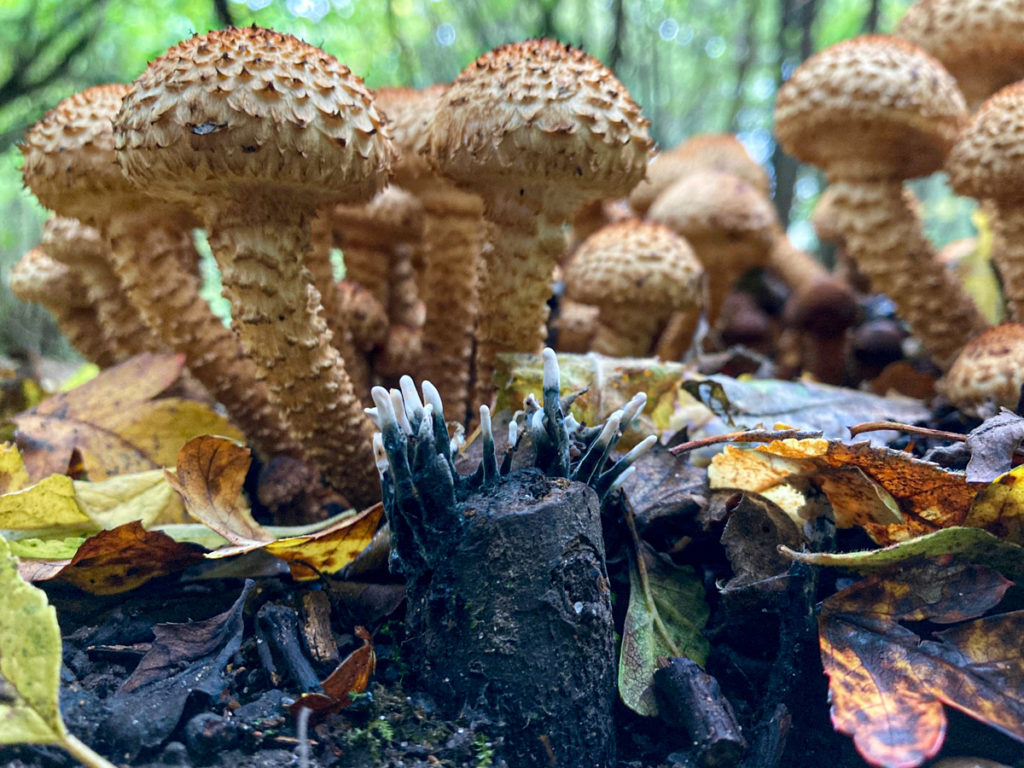
There are 15,000 species in the UK, all running on a limited number of describable characteristics – shape, size, colour, texture, gills, tubes, webbing, caps, cups, smell, sap, relationship with nearby trees. Even Ray Mears doesn't fully trust his fungus ID skills when eating in the wild.
Or as someone said at the start: "All mushrooms can be eaten once, not all can be eaten twice…"
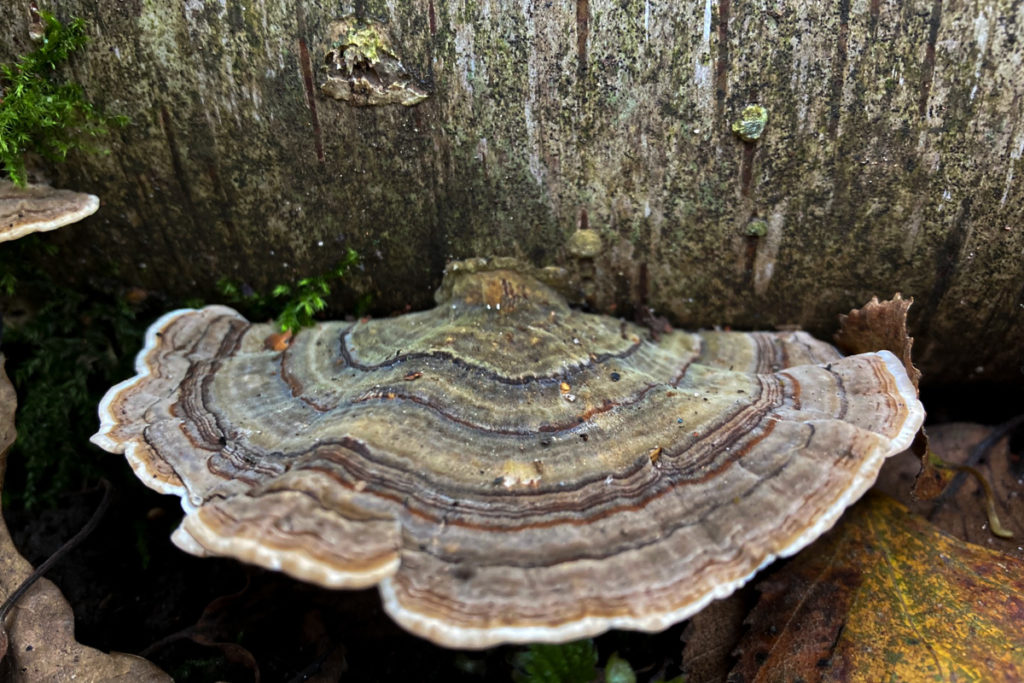
Thanks again to Lukas Large, Natural Sciences Curator at Birmingham Museums, who led the walk. You can check out his Flickr stream for some great photos.
We found out about him from fellow Walkspace member Jacob Williams, who led one of our members walk on a journey to the Centre of the Earth and urged us to look out for Lukas Large's next walk. Follow him on Twitter @lukaslarge.
Or just get out there and look. But as Lukas says: "If you want to go foraging for fungi, please do it ethically. Many of our nature reserves and country parks are the last fragments of nature in a sea of people and agriculture, so the fungi there are precious and should be left for wildlife and other people to enjoy."
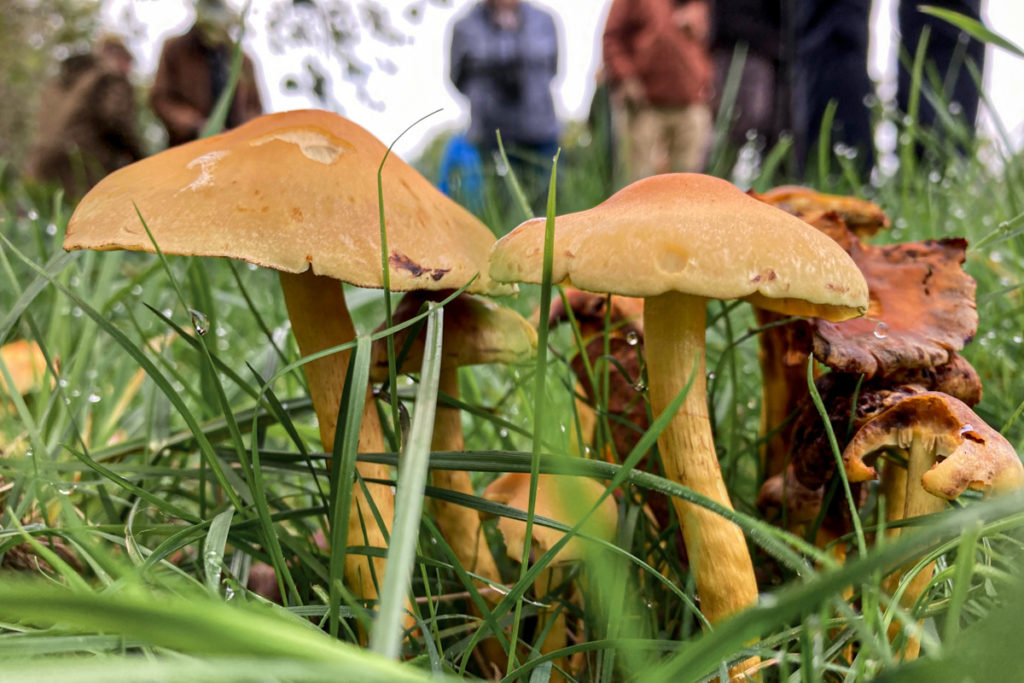
All photos: Pete Ashton (except for amethyst deceiver and white saddle by Fiona Cullinan)
